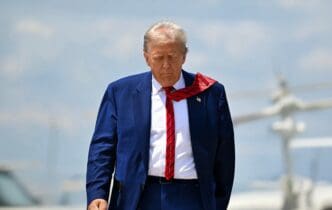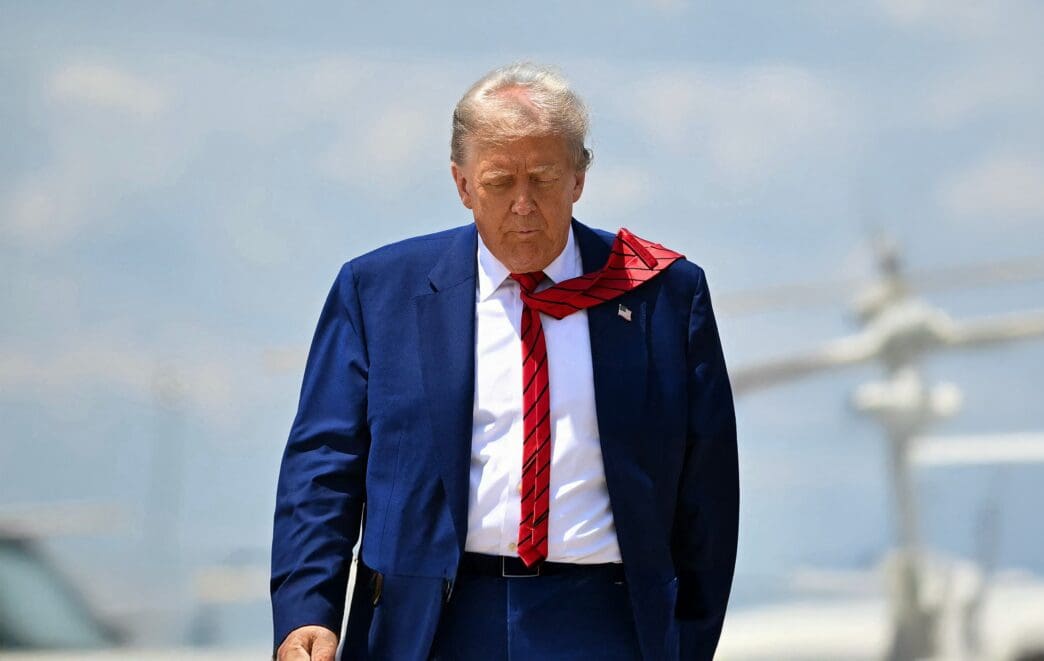Executive Summary
- President Trump is pursuing an ambitious diplomatic initiative to resolve global conflicts, leveraging momentum from a recently brokered ceasefire-for-hostages deal in Gaza to engage with Ukraine, Russia, and China.
- The Gaza ceasefire, while securing the release of living hostages, faces immediate complications and fragility due to disputes over the return of deceased hostages and unresolved long-term issues for the region.
- Trump met with Ukrainian President Volodymyr Zelensky, where he refused to provide long-range missiles and suggested ending the war “where they are,” subsequently arranging a meeting with Russian President Vladimir Putin to discuss the conflict.
The Story So Far
- President Donald Trump’s current diplomatic push, involving meetings with Ukrainian President Zelensky, Russian President Putin, and Chinese President Xi Jinping, is primarily an effort to capitalize on the momentum from a recently brokered ceasefire-for-hostages deal in Gaza. This initiative aims to address other complex global conflicts and tensions, even as his administration faces ongoing challenges in fully solidifying the Middle East truce and navigating the inherent difficulties of applying similar diplomatic leverage to nuclear powers.
Why This Matters
- President Trump’s diplomatic push, while securing a fragile ceasefire-for-hostages deal in Gaza that still faces significant unresolved issues, signals a broader attempt to resolve global conflicts. However, his approach to the Ukraine war, including denying long-range missiles and suggesting an end to the conflict “where they are,” could pressure Ukraine into land concessions, while efforts to leverage his Middle East success with major powers like Russia and China face considerable challenges due to their limited reliance on US influence.
Who Thinks What?
- President Trump is confident in his diplomatic ability to leverage the Gaza ceasefire momentum to resolve other global conflicts, believing he can achieve breakthroughs with nations like Russia and China despite their independence from U.S. support.
- American officials involved in the Gaza ceasefire acknowledge its success in securing living hostages but note its fragility due to unresolved issues like the return of deceased hostages’ remains, Hamas’s disarmament, and Gaza’s future governance.
- Senior U.S. and European officials express skepticism that Trump’s Middle East success will easily translate to resolving conflicts with nuclear powers like Russia and China, as these nations are not dependent on the United States and may not alter their strategies.
President Donald Trump is seeking to capitalize on the momentum from a recently brokered ceasefire-for-hostages deal in Gaza, embarking on a busy week of international diplomacy aimed at resolving other global conflicts and tensions. The diplomatic push, which began with a trip to the Middle East, saw Trump engage with Ukrainian President Volodymyr Zelensky at the White House and schedule upcoming meetings with Russian President Vladimir Putin in Budapest and Chinese President Xi Jinping in South Korea. This initiative comes as his administration faces challenges in solidifying the Middle East truce and navigating complex international relations.
Middle East Ceasefire and Lingering Challenges
The week commenced with Trump’s return from a 36-hour trip to the Middle East, where he celebrated the newly brokered ceasefire-for-hostages agreement. Special presidential envoy for peace missions, Steve Witkoff, and Jared Kushner were instrumental in convincing Israeli and Hamas officials, through Arab interlocutors, to agree to the deal.
Despite the diplomatic success in securing the release of 20 living hostages, the truce has faced immediate complications. Israel has accused Hamas of failing to return the remains of over a dozen deceased hostages, leading to outrage. American officials, however, noted the logistical difficulties Hamas faces in locating and extracting bodies from rubble without heavy equipment.
President Trump discussed the issue of hostage remains with Israeli Prime Minister Benjamin Netanyahu on Thursday, stating, “We’re going to find out if they behave. If they don’t behave, we’ll take care of it.” While officials believe the issue is unlikely to derail the entire deal, it underscores the fragility of the agreement and the significant details that remain unresolved, including Hamas’s disarmament, Gaza’s future governance, and the prospect of a Palestinian state.
Focus Shifts to Russia and Ukraine
Energized by the Middle East outcome, Trump quickly directed Witkoff to focus on resolving the conflict in Ukraine, stating, “We have to get Russia done. We got to get that one done.” This directive preceded a meeting with Ukrainian President Volodymyr Zelensky at the White House, where discussions included Ukraine’s request for new long-range Tomahawk missiles.
During the meeting, Trump made it clear to Zelensky that the long-range missiles would not be provided for now. An official described the conversation as “tense, frank and, at times, uncomfortable,” with Trump reportedly under the impression that Ukraine seeks to escalate and prolong the conflict. Trump later suggested that Russia and Ukraine should end the war “where they are,” indicating a shift back to his previous position on land concessions.
A phone call initiated by the Kremlin, ostensibly to congratulate Trump on his Middle East success, resulted in the arrangement of an in-person meeting with President Putin in Budapest, expected within the next two weeks. This marks another attempt at face-to-face diplomacy, despite unclear parameters for a peace deal.
Diplomatic Hurdles with Global Powers
Translating the leverage Trump employed on Israel to resolve conflicts with nuclear powers like Russia and China presents a greater challenge, as these nations are not dependent on the United States for military or financial support. Many senior US and European officials have expressed doubt that Trump’s Middle East success will immediately alter Moscow or Beijing’s strategies.
Trump’s approach to Netanyahu, which included acknowledging the Israeli leader’s political concerns and even suggesting a pardon for his corruption trial, highlights his willingness to find political levers. However, finding similar leverage with an authoritarian leader like Putin, who faces fewer domestic political constraints, will be more difficult.
Beyond Russia and Ukraine, Trump’s busy diplomatic schedule included authorizing the CIA to operate covertly in Venezuela, threatening strikes within the country, and endorsing Argentina’s leader with a $20 billion lifeline from the US Treasury. He also announced new China tariff threats ahead of a high-stakes meeting with President Xi Jinping in South Korea at the end of the month, aiming to clarify trade tensions.
Outlook on Future Engagements
The planned summits with Putin and Xi would mean back-to-back meetings with two global adversaries who have deepened their alliance in recent years. Trump expressed confidence in resolving the Ukraine war before his meeting with Xi, despite skepticism from some officials about Putin’s genuine interest in US-brokered negotiations.
While Trump acknowledged the possibility of being “played” by Putin, he maintained confidence in his diplomatic skills, stating, “I’ve been played all my life by the best of them, and I came out really well.” The coming weeks will test whether the momentum from the Gaza deal can indeed be leveraged to achieve broader diplomatic breakthroughs on the global stage.








